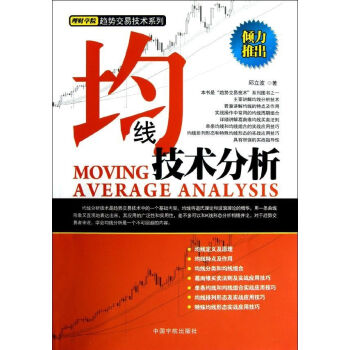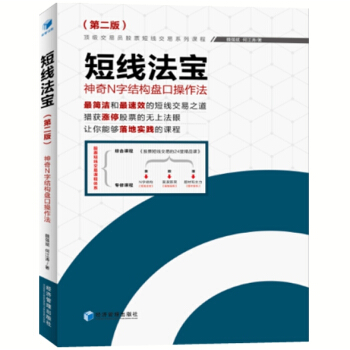![数学名著系列丛书:计量金融精要 [Mathematics Monograph Series:The Elements of Financial Econometrics]](https://pic.tinynews.org/11672614/552b7770Na852f408.jpg)

具体描述
产品特色
编辑推荐
著名的普林斯顿大学教授倾力打造的精品英文版的金融数学方面的精品教材。内容简介
《数学名著系列丛书:计量金融精要》是一本关于金融计量方面的基础用书,提供了核心基础资料,包括金融研究日益增长的科学前沿和金融工业方面重要的发展情况。《数学名著系列丛书:计量金融精要》对资产定价理论、投资组合优化和风险管理方法提供了简洁的和紧凑的处理。提供了单因素和多因素情况下的时间序列模型技术,在分析财务数据上下文的时候介绍了他们的均值和方差。真实的数据分析贯穿全书,是《数学名著系列丛书:计量金融精要》的一个明显的特征。作者简介
范剑青,美国普林斯顿大学统计与金融工程终身教授,The Annals of Statistics 杂志主编。1982年毕业于复旦大学数学系,随后考入中国科学院应用数学所攻读硕士。1986年进入美国加州柏克萊大学攻读博士学位,师从国际著名的统计学家 Bickel 教授和Donoho教授,在过去的十多年里,范教授发表了一百多篇论文,已经出版两本英文专著。于2004年任 The Annals of Statistics 的主编,成为该杂志创刊70多年来**的亚裔主编。他还当选为美国统计学会院士(Fellow)、国际数理研究院院士和国际统计研究院院士。2005年出任中国科学院数学与系统科学研究院统计科学研究中心主任,2006年获得国家杰出海外青年基金。内页插图
目录
Preface to Mathematics Monograph SeriesPreface
Chapter 1 Asset Returns
1.1 Returns
1.1.1 One-period simple returns and gross returns
1.1.2 Multiperiod returns
1.1.3 Log returns and continuously compounding
1.1.4 Adjustment for dividends
1.1.5 Bond yields and prices
1.1.6 Excess returns
1.2 Behavior of?nancial return data
1.2.1 Stylized features of?nancial returns
1.3 E±cient markets hypothesis and statistical models for returns
1.4 Tests related to e±cient markets hypothesis
1.4.1 Tests for white noise
1.4.2 Remarks on the Ljung-Box test
1.4.3 Tests for random walks
1.4.4 Ljung-Box test and Dickey-Fuller test
1.5 Appendix: Q-Q plot and Jarque-Bera test
1.5.1 Q-Q plot
1.5.2 Jarque-Bera test
1.6 Further reading and software implementation
1.7 Exercises
Chapter 2 Linear Time Series Models
2.1 Stationarity
2.2 Stationary ARMA models
2.2.1 Moving average processes
2.2.2 Autoregressive processes
2.2.3 Autoregressive and moving average processes
2.3 Nonstationary and long memory ARMA processes
2.3.1 Random walks
2.3.2 ARIMA model and exponential smoothing
2.3.3 FARIMA model and long memory processes
2.3.4 Summary of time series models
2.4 Model selection using ACF, PACF and EACF
2.5 Fitting ARMA models: MLE and LSE
2.5.1 Least squares estimation
2.5.2 Gaussian maximum likelihood estimation
2.5.3 Illustration with gold prices
2.5.4 A snapshot of maximum likelihood methods
2.6 Model diagnostics: residual analysis
2.6.1 Residual plots
2.6.2 Goodness-of-?t tests for residuals
2.7 Model identi?cation based on information criteria
2.8 Stochastic and deterministic trends
2.8.1 Trend removal
2.8.2 Augmented Dickey-Fuller test
2.8.3 An illustration
2.8.4 Seasonality
2.9 Forecasting
2.9.1 Forecasting ARMA processes
2.9.2 Forecasting trends and momentum of?nancial markets
2.10 Appendix: Time series analysis in R
2.10.1 Start up with R
2.10.2 R-functions for time series analysis
2.10.3 TSA{ an add-on package
2.11 Exercises
Chapter 3 Heteroscedastic Volatility Models
3.1 ARCH and GARCH models
3.1.1 ARCH models
3.1.2 GARCH models
3.1.3 Stationarity of GARCH models
3.1.4 Fourth moments
3.1.5 Forecasting volatility
3.2 Estimation for GARCH models
3.2.1 Conditional maximum likelihood estimation
3.2.2 Model diagnostics
……
Chapter 4 Multivariate Time Series Analysis
Chapter 5 Effcient Portfolios and Capital Asset Pricing Model
Chapter 6 Factor Pricing Models
Chapter 7 Portfolio Allocation and Risk Assessment
Chapter 8 Consumption based CAPM
Chapter 9 Present-value Models
References
Author Index
Subject Index
精彩书摘
《数学名著系列丛书:计量金融精要》:Chapter 1
Asset Returns The primary goal of investing in a -nancial market is to make pro-ts without taking excessive risks. Most common investments involve purchasing -nancial assets such as stocks, bonds or bank deposits, and holding them for certain periods. Posi- tive revenue is generated if the price of a holding asset at the end of holding period is higher than that at the time of purchase (for the time being we ignore transaction charges). Obviously the size of the revenue depends on three factors: (i) the initial capital (i.e. the number of assets purchased), (ii) the length of holding period, and (iii) the changes of the asset price over the holding period. A successful investment pursues the maximum revenue with a given initial capital, which may be measured explicitly in terms of the so-called return . A return is a percentage de-ned as the change of price expressed as a fraction of the initial price. It turns out that asset returns exhibit more attractive statistical properties than asset prices themselves.
Therefore it also makes more statistical sense to analyze return data rather than price series.
1.1 Returns
Let Pt denote the price of an asset at time t. First we introduce various de-nitions for the returns for the asset.
1.1.1 One-period simple returns and gross returns
Holding an asset from time t ? 1 to t, the value of the asset changes from Pt?1 to Pt. Assuming that no dividends paid are over the period. Then the one-period simple return is de-ned as
It is the pro-t rate of holding the asset from time t ? 1 to t. Often we write Rt = 100Rt%, as 100Rt is the percentage of the gain with respect to the initial capital Pt?1. This is particularly useful when the time unit is small (such as a day or an hour); in such cases Rt typically takes very small values. The returns for lessrisky assets such as bonds can be even smaller in a short period and are often quoted in basis points , which is 10; 000Rt. The one period gross return is de-ned as Pt=Pt?1 = Rt 1. It is the ratio of the new market value at the end of the holding period over the initial market value. 1.1.2 Multiperiod returns
The holding period for an investment may be more than one time unit. For any integer k > 1, the returns for over k periods may be de-ned in a similar manner.
For example, the k-period simple return from time t ? k to t is and the k-period gross return is Pt=Pt?k = Rt(k) 1. It is easy to see that the multiperiod returns may be expressed in terms of one-period returns as follows:
If all one-period returns Rt; ;Rt?k 1 are small, (1.3) implies an approximation
This is a useful approximation when the time unit is small (such as a day, an hour or a minute).
1.1.3 Log returns and continuously compounding
In addition to the simple return Rt, the commonly used one period log return is
de-ned as
Note that a log return is the logarithm (with the natural base) of a gross return and log Pt is called the log price. One immediate convenience in using log returns is that the additivity in multiperiod log returns, i.e. the k period log return rt(k) ′
log(Pt=Pt?k) is the sum of the k one-period log returns:
An investment at time t ? k with initial capital A yields at time t the capitalwhere 1r = (rt rt?1 ¢ ¢ ¢ rt?k 1)=k is the average one-period log returns. In this book returns refer to log returns unless speci-ed otherwise.
Note that the identity (1.6) is in contrast with the approximation (1.4) which is only valid when the time unit is small. Indeed when the values are small, the two returns are approximately the same:
However, rt < Rt. Figure 1.1 plots the log returns against the simple returns for the Apple Inc share prices in the period of January 1985 { February 2011. The returns are calculated based on the daily close prices for the three holding periods: a day, a week and a month. The -gure shows that the two de-nitions result almost the same daily returns, especially for those with the values between ?0.2 and 0.2. However when the holding period increases to a week or a month, the discrepancy between the two de-nitions is more apparent with a simple return always greater than the corresponding log return.
……
前言/序言
用户评价
当我看到《计量金融精要》这本书时,我脑海中立刻浮现出无数金融图表和统计公式交织的画面。我一直渴望能够用更科学、更系统的方法来理解金融市场。我不知道书中是否会涉及如何运用非线性时间序列模型来捕捉金融市场中的复杂动态,比如隐藏马尔可夫模型(HMM)或状态切换模型?我同样期待书中能够详细介绍如何进行风险传染的计量模型分析,例如,在金融危机时期,不同资产或市场之间的风险如何传递?我希望书中能够提供关于如何进行模型鲁棒性检验的指导,确保模型的结论不会因为数据的微小变动而发生剧烈变化。在进行金融数据建模时,我常常会遇到如何有效利用外部信息(如宏观经济数据、新闻情绪指数等)的问题,不知道书中是否会提供相关的建模方法?例如,如何将这些外部信息纳入到计量模型中?我希望这本书能够帮助我建立一种“全局观”的金融分析思维,让我能够从多个角度、多个层次去理解金融市场。
评分这本《计量金融精要》的书籍,与其说是一本教科书,不如说是一次对金融世界深层逻辑的探索之旅。当我翻开它时,我并没有立即去寻找具体的公式和定理,而是尝试去感受作者在字里行间所传达的那种严谨而又富有洞察力的思维方式。我设想着,书中一定会详细讲解如何运用统计学原理来理解金融现象,例如,在分析股票收益率的波动性时,是否会引入误差项的方差、均值回归等概念?我很好奇,书中对于“计量”的理解,是仅仅停留在数据的统计描述,还是会深入到因果关系的识别和检验?我特别期待书中能够阐述,如何利用计量模型来预测未来金融市场的走向,虽然我知道预测的难度,但理解其背后的方法论仍然至关重要。不知道它是否会涉及到面板数据模型的应用,比如分析不同国家或不同行业的金融表现,以及如何处理面板数据中的异质性问题。另外,对于模型的选择和检验,书中是否会提供一套系统的流程和标准?例如,当一个模型拟合度不佳时,我们应该如何判断是模型设定错误,还是数据本身存在问题?我对书中关于模型诊断的讨论充满期待,例如残差分析、异方差检验、自相关检验等,这些都是构建可靠金融模型不可或缺的步骤。总而言之,我希望这本书能够引导我从“观察”金融市场,升级到“理解”和“分析”金融市场,最终具备用量化工具“驾驭”金融市场的能力。
评分《计量金融精要》这本书,光是听名字就充满了吸引力,它承诺了在金融领域运用计量方法所能带来的“精要”洞见。我一直认为,金融市场并非完全是随机的,其中一定存在着可被量化和理解的规律。我好奇书中是否会讲解如何利用贝叶斯统计方法来处理金融数据,例如,在存在先验信息的情况下,如何更新模型参数?我同样期待书中能够深入探讨如何进行时间序列数据的平稳性检验和协整分析,这些是理解金融资产之间长期均衡关系的关键。在进行金融建模时,我常常会遇到模型选择和参数估计的难题,不知道书中是否会提供一些通用的准则和方法?例如,如何选择合适的回归模型?如何进行最大似然估计或矩估计?我希望这本书能够帮助我建立一种严谨的金融分析态度,让我能够区分“相关性”和“因果性”,避免误导性的结论。更重要的是,我希望这本书能够培养我的“建模直觉”,让我能够根据金融市场的特点,设计出符合实际的模型。
评分对于《计量金融精要》这本书,我更多的是抱着一种“解密”的心态去审视它。金融市场,在我眼中,常常如同一个充满魅力的谜团,无数的数字和图表背后,隐藏着错综复杂的规律。我希望这本书能够成为一把钥匙,为我打开这扇通往金融奥秘的门。我猜想,书中一定会从最基础的概率论和统计学出发,逐步构建起计量经济学在金融领域的应用框架。我特别关注书中对于“精要”二字的理解,它是否意味着要提炼出最核心、最常用的模型和方法?例如,在处理非平稳时间序列时,书中是否会详细讲解差分、季节性调整等方法?在进行变量之间的关系分析时,是否会介绍格兰杰因果检验、向量自回归(VAR)模型等?我希望书中能够提供足够多的理论铺垫,让我明白每一个模型的提出背景、假设条件以及适用范围。同时,我也期盼着书中能够包含大量的实际案例,最好是能够用中国的金融市场数据进行实证分析,这样我才能更直观地理解抽象的理论如何落地。比如,在分析通货膨胀对股票市场的影响时,书中会如何构建计量模型?在评估风险时,除了VaR,是否还会介绍ES(期望损失)等更全面的风险度量方法?我希望这本书能帮助我建立起一种批判性思维,不要盲目迷信模型,而是能够理解模型的局限性,并能够根据实际情况进行调整和改进。
评分《计量金融精要》这本书,在我看来,更像是一本通往金融科学殿堂的“修行秘籍”。我一直认为,金融分析不仅仅是凭经验的“感觉”,更需要科学的“方法”和严谨的“逻辑”。这本书的名字,本身就充满了吸引力,“计量”二字暗示了量化分析的重要性,“金融”二字则点明了应用领域,“精要”二字则承诺了其内容的深度和效率。我期待它能教会我如何用数学和统计的语言来描述和理解金融现象。我不知道书中是否会涉及到一些高级的计量技术,比如状态空间模型、卡尔曼滤波等,这些在现代金融研究中扮演着越来越重要的角色。我同样好奇,书中对于金融创新产品的定价,比如期权、期货等,是否会运用到Black-Scholes模型之外的更复杂的方法?我希望这本书能够为我提供一个关于如何进行数据挖掘和特征工程的指导,因为在金融领域,高质量的数据是构建有效模型的基础。例如,在进行宏观经济指标与股票市场关联性分析时,如何选择和处理宏观变量?在构建投资组合时,如何利用计量模型来优化资产配置?我希望这本书能够帮助我克服对复杂数学公式的恐惧,让我能够理解其背后蕴含的金融意义。更重要的是,我希望这本书能够培养我独立解决金融问题的能力,而不是仅仅依赖于现有的模型和工具。
评分《计量金融精要》这本书,如同一个等待被发掘的宝藏,它的名字就透露着一种深邃和精炼。我一直认为,金融市场之所以能够持续存在和发展,离不开背后精密的数学和统计支撑。我希望这本书能够为我打开这扇通往“量化思维”的大门。我不确定书中会如何处理金融时间序列中的“噪声”和“异常值”,这些往往是影响模型准确性的关键因素。我非常期待书中能够深入探讨如何利用机器学习技术在金融领域的应用,例如,支持向量机、决策树、神经网络等,这些技术在风险预测、欺诈检测、交易策略制定等方面都有着广泛的应用前景。当然,我也希望书中不会仅仅停留在技术的介绍,而是能够结合金融理论,解释这些技术是如何帮助我们理解金融现象的。例如,在进行客户信用评分时,如何利用机器学习模型来提高预测的准确性?在进行股票价格预测时,如何利用深度学习模型来捕捉更复杂的非线性关系?我希望这本书能够帮助我建立起一种“数据驱动”的金融分析能力,让我能够从海量数据中提取有价值的信息,并转化为实际的投资决策。
评分当我的目光落在《计量金融精要》这本书上时,我内心涌起的是一种对知识的渴望和对金融世界的敬畏。这本书的厚重感,不仅仅是纸张的重量,更是知识的深度和广度的象征。我希望它能为我揭示金融市场看似混乱表象下的内在秩序。不知道书中会如何讲解回归分析在金融中的应用,例如,多重线性回归、逻辑回归等,以及如何进行模型的多重共线性诊断和异方差检验?我对于书中可能涉及到的因果推断方法也非常感兴趣,比如工具变量法、断点回归等,这些方法在识别金融政策影响或市场冲击效果时至关重要。我期待书中能够包含关于金融建模中“过拟合”和“欠拟合”问题的讨论,以及如何通过交叉验证、正则化等技术来避免这些问题。另外,在进行风险建模时,除了对单个资产的风险度量,我更关心如何对整个投资组合的风险进行度量和管理,不知道书中是否会介绍协方差矩阵的估计、优化等内容?我希望这本书能够以一种循序渐进的方式,带领我从基础概念深入到高级应用,让我在不断学习和实践中,逐步掌握计量金融的精髓。
评分《计量金融精要》这本书,对我来说,是一个探索金融世界“硬核”知识的入口。我一直认为,金融的本质是风险和收益的权衡,而量化方法正是理解和管理这种权衡的关键。我不知道书中是否会详细讲解如何利用非参数回归技术来处理金融数据中的高维性和非线性问题?我同样期待书中能够深入探讨如何进行金融市场微观结构的计量模型分析,例如,订单簿动态、交易频率等因素如何影响资产价格?我希望书中能够提供关于如何进行模型外推和预测的指导,确保模型的结论不仅仅适用于历史数据,更能对未来市场变化有一定的预见性。在进行金融建模时,我常常会遇到如何处理金融市场中“非对称性”信息的问题,不知道书中是否会提供相关的建模思路?例如,如何利用计量模型来分析市场情绪或信息不对称的影响?我希望这本书能够帮助我建立一种“实证导向”的金融研究方法,让我能够通过数据分析来检验理论假设,并发现新的金融规律。
评分一本名为《计量金融精要》的书,足以勾起我内心深处对金融量化分析的好奇。我渴望理解那些隐藏在金融市场波动背后,用数学语言精心编织的逻辑。我不知道书中是否会详细介绍非参数计量方法,比如核密度估计、核回归等,这些方法在处理非线性关系和避免参数设定错误时非常有优势。我同样关心书中对于“模型可解释性”的讨论,尤其是在引入复杂模型时,如何确保我们能够理解模型的决策过程,而不是一个“黑箱”。我期待书中能够提供关于如何评估和比较不同计量模型的框架,例如,信息准则(AIC, BIC)的使用,以及如何根据实际应用场景选择最合适的模型。在进行金融数据分析时,我常常会遇到数据清洗和预处理的挑战,不知道书中是否会提供相关的指导和技巧?例如,如何处理缺失值、异常值,如何进行变量的变换和标准化?我希望这本书能够帮助我建立一种系统性的金融建模思维,让我能够从问题定义、数据准备、模型选择、参数估计、模型检验到结果解释,完成一个完整的研究流程。
评分一本关于计量经济学的书,厚重而沉甸甸地摆在书架上,书名《计量金融精要》几个字仿佛散发着知识的微光。我一直以来都对金融市场充满好奇,但又苦于缺乏理解其背后运作规律的工具。经济学原理似乎总是隔着一层抽象的面纱,而量化分析更是令人望而却步。这本书的出现,恰好满足了我想要深入探究金融世界“为什么”和“如何”的渴望。我期待它能为我揭示那些隐藏在股价波动、利率变动背后的数学模型和统计方法。不知道书中会详细介绍哪些经典的计量经济学模型,比如ARIMA模型、GARCH模型,还是会更侧重于贝叶斯方法在金融领域的应用?我希望它不仅仅是理论的堆砌,更能通过实际的案例分析,让我感受到这些抽象概念在真实金融市场中的强大生命力。例如,当讨论风险管理时,是否会涉及VaR(风险价值)的计算?在资产定价方面,又会如何运用计量模型来检验有效市场假说?我尤其关心书中对于金融时间序列数据的处理技巧,这是否会涉及到单位根检验、协整检验等内容,以及如何解释这些检验的结果。这本书的定位是“精要”,但愿它能在有限的篇幅内,精准地抓住计量金融的核心要义,为初学者提供一个扎实的起点,也为有一定基础的读者提供新的视角。我希望能从这本书中学习到如何构建、估计和检验金融模型,从而更有效地分析金融数据,做出更明智的投资决策。
评分精装书,没有一本封皮是完好无损的
评分好书
评分两位作者就不用多介绍了,都是很权威的,书也不错!
评分支持京东,大力支持京东,我是京东支持帝!支持京东,大力支持京东,我是京东支持帝!支持京东,大力支持京东,我是京东支持帝!支持京东,大力支持京东,我是京东支持帝!支持京东,大力支持京东,我是京东支持帝!支持京东,大力支持京东,我是京东支持帝!支持京东,大力支持京东,我是京东支持帝!支持京东,大力支持京东,我是京东支持帝!支持京东,大力支持京东,我是京东支持帝!支持京东,大力支持京东,我是京东支持帝!支持京东,大力支持京东,我是京东支持帝!支持京东,大力支持京东,我是京东支持帝!支持京东,大力支持京东,我是京东支持帝!支持京东,大力支持京东,我是京东支持帝!支持京东,大力支持京东,我是京东支持帝!支持京东,大力支持京东,我是京东支持帝!支持京东,大力支持京东,我是京东支持帝!支持京东,大力支持京东,我是京东支持帝!支持京东,大力支持京东,我是京东支持帝!支持京东,大力支持京东,我是京东支持帝!支持京东,大力支持京东,我是京东支持帝!支持京东,大力支持京东,我是京东支持帝!支持京东,大力支持京东,我是京东支持帝!支持京东,大力支持京东,我是京东支持帝!支持京东,大力支持京东,我是京东支持帝!支持京东,大力支持京东,我是京东支持帝!支持京东,大力支持京东,我是京东支持帝!支持京东,大力支持京东,我是京东支持帝!支持京东,大力支持京东,我是京东支持帝!支持京东,大力支持京东,我是京东支持帝!支持京东,大力支持京东,我是京东支持帝!支持京东,大力支持京东,我是京东支持帝!支持京东,大力支持京东,我是京东支持帝!支持京东,大力支持京东,我是京东支持帝!支持京东,大力支持京东,我是京东支持帝!支持京东,大力支持京东,我是京东支持帝!支持京东,大力支持京东,我是京东支持帝!支持京东,大力支持京东,我是京东支持帝!支持京东,大力支持京东,我是京东支持帝!支持京东,大力支持京东,我是京东支持帝!支持京东,大力支持京东,我是京东支持帝!支持京东,大力支持京东,我是京东支持帝!支持京东,大力支持京东,我是京东支持帝!支持京东,大力支持京东,我是京东支持帝!支持京东,大力支持京东,我是京东支持帝!支持京东,大力支持京东,我是京东支持帝!支持京东,大力支持京东,我是京东支持帝!支持京东,大力支持京东,我是京东支持帝!支持京东,大力支持京东,我是京东支持帝!支持京东,大力支持京东,我是京东支持帝!支持京东,大力支持京东,我是京东支持帝!支持京东,大力支持京东,我是京东支持帝!支持京东,大力支持京东,我是京东支持帝!支持京东,大力支持京东,我是京东支持帝!支持京东,大力支持京东,我是京东支持帝!
评分支持京东,大力支持京东,我是京东支持帝!支持京东,大力支持京东,我是京东支持帝!支持京东,大力支持京东,我是京东支持帝!支持京东,大力支持京东,我是京东支持帝!支持京东,大力支持京东,我是京东支持帝!支持京东,大力支持京东,我是京东支持帝!支持京东,大力支持京东,我是京东支持帝!支持京东,大力支持京东,我是京东支持帝!支持京东,大力支持京东,我是京东支持帝!支持京东,大力支持京东,我是京东支持帝!支持京东,大力支持京东,我是京东支持帝!支持京东,大力支持京东,我是京东支持帝!支持京东,大力支持京东,我是京东支持帝!支持京东,大力支持京东,我是京东支持帝!支持京东,大力支持京东,我是京东支持帝!支持京东,大力支持京东,我是京东支持帝!支持京东,大力支持京东,我是京东支持帝!支持京东,大力支持京东,我是京东支持帝!支持京东,大力支持京东,我是京东支持帝!支持京东,大力支持京东,我是京东支持帝!支持京东,大力支持京东,我是京东支持帝!支持京东,大力支持京东,我是京东支持帝!支持京东,大力支持京东,我是京东支持帝!支持京东,大力支持京东,我是京东支持帝!支持京东,大力支持京东,我是京东支持帝!支持京东,大力支持京东,我是京东支持帝!支持京东,大力支持京东,我是京东支持帝!支持京东,大力支持京东,我是京东支持帝!支持京东,大力支持京东,我是京东支持帝!支持京东,大力支持京东,我是京东支持帝!支持京东,大力支持京东,我是京东支持帝!支持京东,大力支持京东,我是京东支持帝!支持京东,大力支持京东,我是京东支持帝!支持京东,大力支持京东,我是京东支持帝!支持京东,大力支持京东,我是京东支持帝!支持京东,大力支持京东,我是京东支持帝!支持京东,大力支持京东,我是京东支持帝!支持京东,大力支持京东,我是京东支持帝!支持京东,大力支持京东,我是京东支持帝!支持京东,大力支持京东,我是京东支持帝!支持京东,大力支持京东,我是京东支持帝!支持京东,大力支持京东,我是京东支持帝!支持京东,大力支持京东,我是京东支持帝!支持京东,大力支持京东,我是京东支持帝!支持京东,大力支持京东,我是京东支持帝!支持京东,大力支持京东,我是京东支持帝!支持京东,大力支持京东,我是京东支持帝!支持京东,大力支持京东,我是京东支持帝!支持京东,大力支持京东,我是京东支持帝!支持京东,大力支持京东,我是京东支持帝!支持京东,大力支持京东,我是京东支持帝!支持京东,大力支持京东,我是京东支持帝!支持京东,大力支持京东,我是京东支持帝!支持京东,大力支持京东,我是京东支持帝!支持京东,大力支持京东,我是京东支持帝!
评分应该不错!
评分应该不错!
评分两位作者就不用多介绍了,都是很权威的,书也不错!
评分很喜欢,不错!
相关图书
本站所有内容均为互联网搜索引擎提供的公开搜索信息,本站不存储任何数据与内容,任何内容与数据均与本站无关,如有需要请联系相关搜索引擎包括但不限于百度,google,bing,sogou 等
© 2025 book.idnshop.cc All Rights Reserved. 静思书屋 版权所有

![火柴大王:一部金融创新与金融监管的启示录 [The Match King: Ivar Kreuger, The Financial Genius] pdf epub mobi 电子书 下载](https://pic.tinynews.org/11682415/553df88bN6c547f4b.jpg)
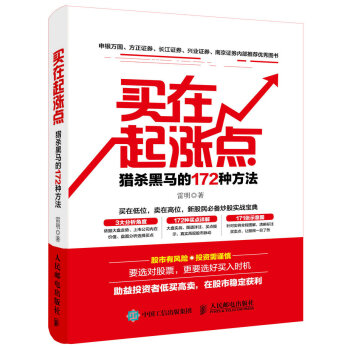
![繁荣基石:自由市场、诚实货币与私有财产 [Pillars of Prosperity: Free Markets, Honest Money,] pdf epub mobi 电子书 下载](https://pic.tinynews.org/11860571/5696785cNf993f0ea.jpg)
![我国商业银行资产管理业务的发展趋势与生态环境研究 [The Research on Ecological Environment and Development Trend of the Asset Management Business of Commercial Banks in China] pdf epub mobi 电子书 下载](https://pic.tinynews.org/12044623/58bd4788Nbe07cc35.jpg)
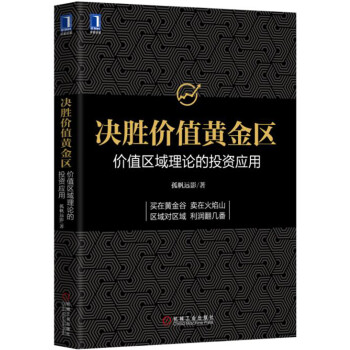
![舵手经典71:股票交易入门 [Understanding Stocks(Second Edition)] pdf epub mobi 电子书 下载](https://pic.tinynews.org/12161162/58db284cNf4a0be6e.jpg)

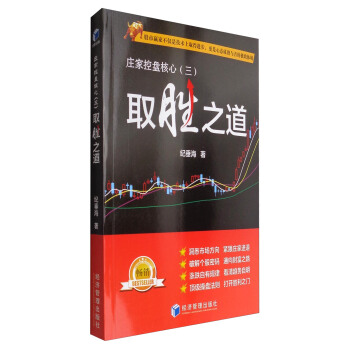
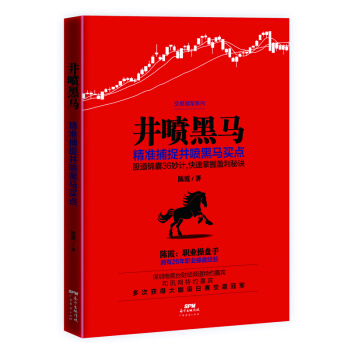
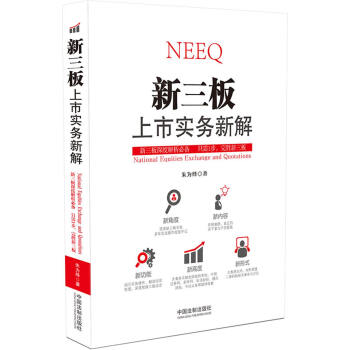
![江恩华尔街选股术 [Wall Street Stock Selector] pdf epub mobi 电子书 下载](https://pic.tinynews.org/12231133/5a0ea8e5Nfb5fd8ea.jpg)




